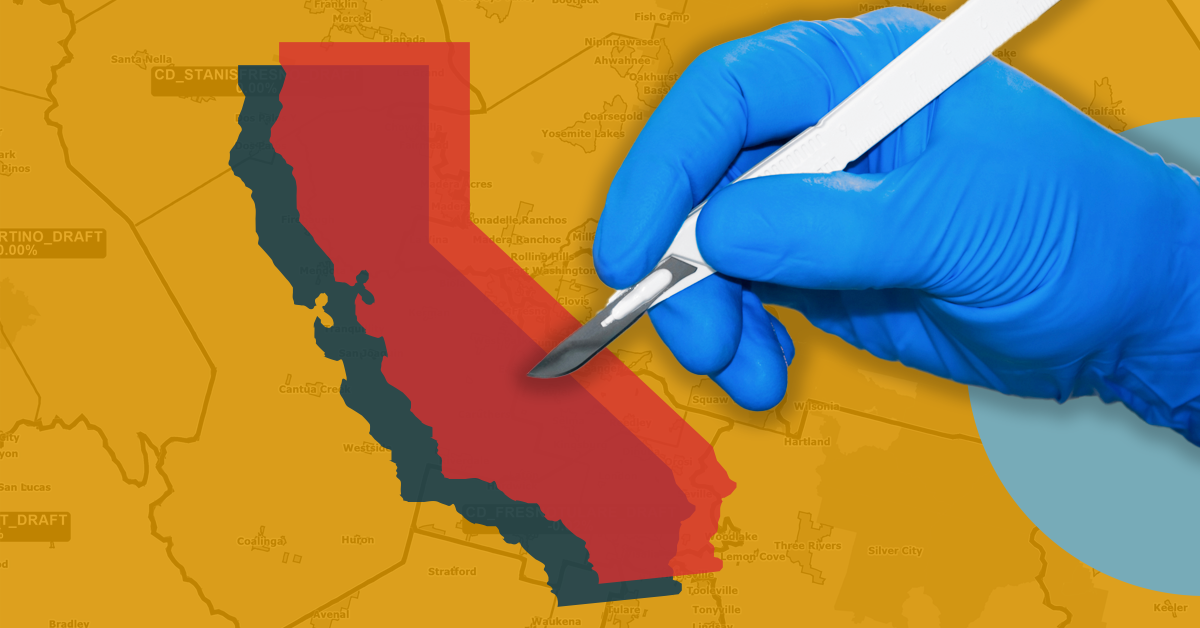The 2020 Census results are in, showing a continued uptick in Hispanic population across the Central Valley, with a hefty decline in Black residents.
Redistricting Insights, a Sacramento-based consulting firm specializing in the redrawing of political boundaries, like many government agencies across the state and nation, began pouring over census data following its release on Thursday.
According to a report from the firm, the Black population has decreased in Fresno, Kings, Tulare, Madera and Merced Counties, despite overall population growth in each county.
Kings County reported the largest loss of Black residents, down 1,991 people from the 2010 census, which registers as an estimated 18.1 percent decrease.
Madera County, which lost 1,033 Black individuals over the last decade, reported the largest percentage decrease at 18.4 percent.
The smallest percentage decline was in Fresno County, coming in at a decrease of 1.6 percent, or down 816 Black residents, from 2010.
While Kern County saw minimal growth in its Black population (2.5 percent), Stanislaus County (8.1 percent) and San Joaquin County (16.6 percent) both saw substantial gains.
Meanwhile, all counties within the San Joaquin Valley reported growth among Hispanic residents, with Kings County reporting the lowest gain at 11.2 percent and Merced County reporting the highest at 23.8 percent.
Outside of Stanislaus and San Joaquin Counties – where they make up a sizable plurality – Hispanics are the majority of all other Central Valley counties.
Overall, the region saw its largest growth in three locales.
The first two? It’s book-ends – Kern and San Joaquin counties – where an influx of Bay Area and Los Angeles expats have relocated.
The other? Fresno County, home to the region’s single-largest city.
Population shifts in the Valley’s counties
The Valley’s Asian population rose across the board, posting its largest percentage gains in San Joaquin County (41.5 percent), Madera County (39.4 percent) and Kern County (34.2 percent).
In Southern California, Los Angeles County mirrors much of the Central Valley with a significant decrease in the Black population. The county lost over 60,000 Black residents, which comes in at a 7.3 percent decrease.
On the other hand, Orange, San Bernardino and Riverside Counties all reported gains, the largest of which came in the Asian population. Orange County saw a 31.4 percent increase with its Asian population, San Bernardino reported a 41.7 percent increase and Riverside Counties saw a 31.3 percent increase.
A look shifts in Congressional seats
Though the California Redistricting Commission has yet to draw the new district lines, the Valley’s incumbent members of Congress can begin to look at the population changes in their districts.
Rep. Josh Harder (D–Turlock) gained 24,161 Asian residents over the last 10 years, which comes in at a 54.4 percent increase. While there is not one majority race in District 10, the Hispanic population holds a plurality with nearly 350,000 people.
Rep. Jim Costa (D–Fresno) represents District 16, which has a 62 percent Hispanic majority. Costa’s district saw a double-digit percentage increase in both the Asian and Hispanic populations.
Three-quarters of the residents in Hanford Republican Rep. David Valadao’s District 21 are Hispanic. Valadao’s district saw minor gains in both the Asian (4.4 percent increase) and Hispanic (7.7 percent increase) populations.
The 22nd Congressional district, home of Rep. Devin Nunes (R–Tulare), saw population gains across the board, the largest of which came in the Asian community (39.5 percent increase).
The Hispanic population holds a plurality at 49 percent.
House Minority Leader Kevin McCarthy, a Bakersfield Republican, saw gains in California’s 23rd district.
Just like in Nunes’ district, the Asian population posted the largest percentage increase at 37.4 percent.
How has California’s exodus hit Congressional seats?
For the first time in its history, California lost a Congressional seat during reapportionment, the other element of the 2020 Census, due to a combination of poor birth rates, high death rates, and an exodus of residents to other states in the nation.
The question for all of us: exactly how hard did the California exodus hit the San Joaquin Valley?
The best marker to judge is comparing the 2020 Census population of currently-existing Congressional districts to the ideal number of residents per district.
That number is 760,350 residents.
Harder’s north Valley seat saw its population exceed the ideal by 1 percent, or 7,569 residents. Costa’s, meanwhile, dipped below the ideal number by 8,918 residents, or 1.2 percent.
Valadao’s south Valley seat saw population dip more than six percent from the ideal, coming up 48,213 short of the ideal population size for a district.
However, his two neighbors – Nunes and McCarthy – saw their districts swell beyond the ideal size by 3.6 and 2.2 percent, respectively.
Those districts now have 27,433 and 16,383 residents more than the ideal, enabling a likely shift in political geography in the south Valley.
Valley seats face the “Congressional ideal”
Statewide, the member whose district fell furthest from the ideal population was Rep. Lucille Roybal-Allard (D–Los Angeles).
Her district’s current population sits more than nine percent bellow the ideal, short 70,139 residents. Her district is the only in California to have a population under 700,000 people, per the 2020 Census.
California’s citizen-led redistricting commission is set to redraw boundaries much of this Fall and winter. It is currently petitioning the California Supreme Court for an extended deadline to deliver finalized maps for Congressional and legislative boundaries, stretching in January 2022.









